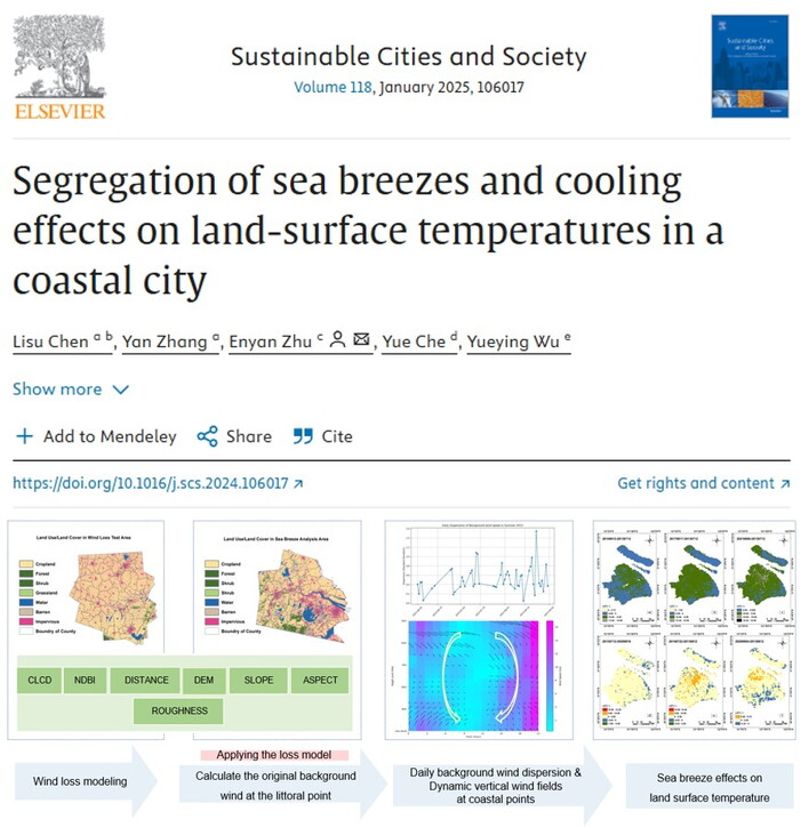Recently, Dao-lun feng, professor at the school of Marine science and engineering of the ship and port pollution prevention research team members Chen su, an associate professor in engineering international top journal Sustainable Cities and Society titled Segregation of sea breezes and cooling effects on land-surface temperatures in a coastal city Cooling Effects on land- Surface Temperatures in a coastal City.
China's eastern coastal cities are far more densely populated and developed than inland cities. The Yangtze River Delta, as the forerunner of urbanization in China, is the region with the highest degree of urbanization and the highest population density in China. Urbanization and a series of changes caused by human activities lead to frequent environmental problems, in which the change of urban thermal environment is particularly important. Therefore, it is urgent to find favorable means and methods to alleviate the thermal environment problems of coastal cities. This paper focuses on the problem of ignoring the daily wind vector variation in sea breeze research, and further proposes a new method to accurately extract sea breeze. The driving force and resistance of sea breeze (regional wind) and systematic wind (represented by monsoon) are considered in this study, and there are obvious stratification phenomena in the horizontal space. Therefore, this stratification phenomenon is used to achieve the accurate identification of sea breeze, and then the influence of sea breeze on the surface temperature of the coastal zone is discussed from two dimensions of wind speed and wind direction. When sea breezes are low, the effects of global warming and urbanization on land surface temperature cannot be ignored. With the increase of wind speed, the influence of global warming and urbanization on land surface temperature gradually decreases. The exploration of sea breeze is conducive to providing theoretical basis for the sustainable utilization of Marine and coastal resources.
Sustainable Cities and Society is a leading journal in the field of engineering technology, which aims to design, understand and promote environmentally sustainable and socially resilient cities from a cross-disciplinary and multidisciplinary research perspective. The latest impact factor for 2024 is 10.50. It has a high influence and reputation in its field.

Figure 1 High-level paper by Associate Professor Chen Lishu
